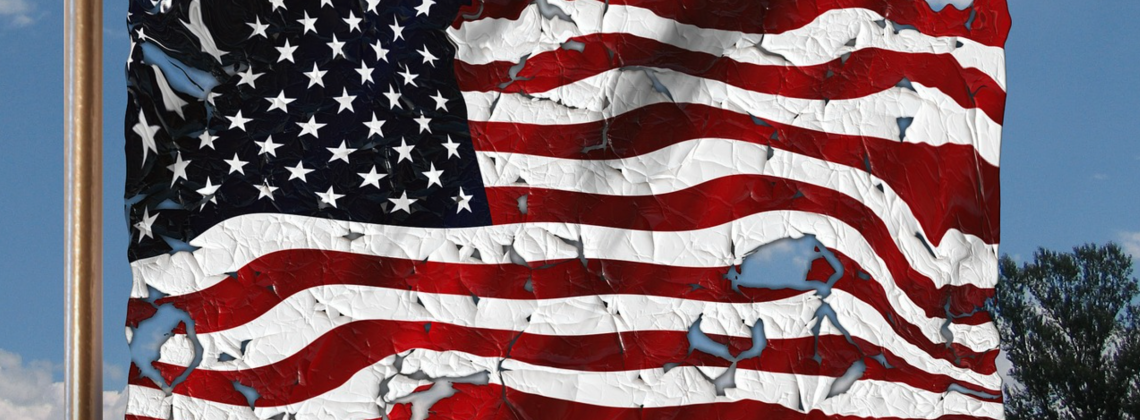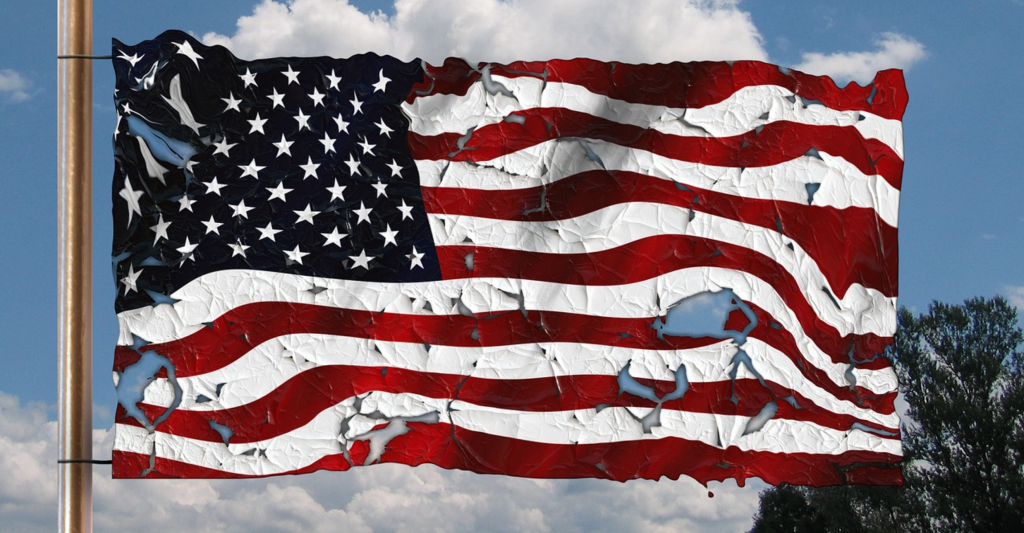

Can each side find a way to preserve freedom for the other?
After a closely divided presidential election that millions of Americans believed was decided fraudulently, the two parties issued platform statements that accused their opponents of heinous political evils.
The Republican Party had committed a “great fraud,” the Democrats charged, and were leading the country toward “despotism.” Republicans countered that the Democrats were engaging in “methods vicious in principle and tyrannical in practice.” Democrats had “devised fraudulent ballots and invented fraudulent certification of returns,” the GOP said.
The Democratic Party responded to these charges by raising the specter of political violence. Democrats said they had reluctantly agreed to accept an allegedly fraudulent Republican victory only to “preserve the country from the horrors of a civil war.”
If these party platforms sound like something that could have been written this year or immediately after the January 6 insurrection, that’s because we’re living in an eerily similar moment. Forty-three percent of Americans now think it is “likely” that a civil war will occur in the United States within the next ten years, according to a poll conducted this year by The Economist and YouGov. And even if a civil war does not occur, a majority expects political divisions to get worse.
But these party platform statements were not written in our own time, nor were they produced in 1860, the year of the presidential election that preceded the only actual civil war the United States has ever had. Instead, they were written in 1880. The civil war that Democrats in 1880 warned might be on the horizon if different political choices were made did not, in fact, occur. Political tempers eventually cooled.
If we want to return to political comity in our own time and defuse a partisan polarization that seems to have no end in sight, perhaps we should look back to the politics of the Gilded Age and discover the reasons a crisis of political violence that could have happened was in fact averted.
If we look at the policy debates of the Gilded Age, it might seem hard at first to figure out why they led to such high political tensions. The two major political debates of the Gilded Age—monetary policy and tariff rates—rarely stir up strong political passions today, and it might be difficult to imagine why people would come to blows over such matters.
But if we look beneath the surface, we see that the debates about finance were really code for a deeper political issue—the question of which region would exercise dominance in a newly reconstructed nation and what the socioeconomic and political direction of that nation would be. In the 1880s the nation was evenly divided between an entirely white, mostly rural, southern-dominated coalition that still resented the Union cause in the Civil War, and a middle-class, Protestant, northern coalition that revered Abraham Lincoln.
Both sides tried to out-vote the other, but without lasting success. A series of closely divided presidential elections from the mid-1870s until the early 1890s failed to settle the matter.
But then something unexpected happened: Each of the opposing coalitions made significant concessions to the other. Republicans gained control of the government, and with that control they enacted into law the tariff and monetary policies they wanted. They set the direction of the national economy, which would continue on an industrial course. Yet they allowed the Democratic Party almost unlimited freedom to engage in political behavior they once had protested as unfair and fraudulent—behavior that included the disfranchisement of millions of Black voters, the creation of vast regions of one-party Democratic rule, and the rise of urban political machines in northern cities that were controlled by powerful Democratic party bosses. Both sides realized that their fundamental concerns and political visions could still be protected, albeit within regional limits.
Are there lessons we could take from this today? At first glance, the fact that the compromise involved the acceptance of white supremacy as the norm and the disfranchisement of the majority of Black voters might incline us to see the Gilded Age political compromise as a grave injustice, not a model for future acts of political reconciliation. Indeed, the compromise did involve a great racial injustice that cannot be excused. Millions of African Americans were denied the right to vote and remained in debt peonage, unprotected from racial violence, because of the unwillingness of northern Republicans to intervene.
But though we might rightly object to the particular terms of the compromise, we can still learn from the principles involved. The principle of finding common ground and making concessions is one that could work today. The concessions did not come primarily on the leading issues of policy debate, such as the tariff and monetary policy. Instead, the concessions, in order to be effective, had to touch on the real source of anxiety: the question of whether people would be free to pursue their moral vision for the future of their society. In the end, while neither side got everything it wanted, both northern white middle-class Protestant Republicans and the two wings of the Democratic Party—northern urban Irish Catholics and southern white rural Protestants—obtained enough assurance that they began accepting election results and abandoned talk of another civil war. Both sides discovered a shared common value that transcended their divisions: the value of preserving the republic.
The same could happen today if Democrats and Republicans could identify the values—not just the policy issues—that are of greatest concern to those on the other side and then find ways to offer assurance that those values will be protected. As long as culturally conservative Republicans fear that Democrats threaten their religious freedom and other values of their region or religious tradition, and as long as Democrats believe that Republicans are a threat to women’s rights, LGBTQ rights, racial justice, and a pluralistic society, a compromise is not likely. Instead, each side will attempt to crush the other. But if both sides can perceive mutually shared interests in the other’s values, and then identify matters of common national concern, there might be room for compromise.
Are there ways to reassure the white working class with the offer of greater inclusion of their values in school curricula while still teaching the long history of racial injustice and the experiences of African Americans? Can we protect women’s rights at the same time that fetal rights are accorded greater legal protection? Is it possible to protect the rights of individuals in the LGBTQ community without unnecessarily infringing upon the religious liberty and conscience rights of those who oppose same-sex marriage?
I think the answer is yes. But we won’t embrace these difficult solutions until we become convinced that our only hope of defusing the tensions that threaten our nation is the discovery of shared values across our political differences and a willingness to settle for less than what we want.
Yet doing this without sacrificing the civil rights of people remains a challenge. The politicians of the Gilded Age united around preserving the republic and avoiding a civil war, but perhaps in our own time we can do even better. Perhaps we can avoid national fracturing while also preserving the voting rights of every American. The Gilded Age compromises certainly were fraught with injustice, but they at least serve as a model for how to find common ground with members of the opposing party—a skill we desperately need to recover again, even if this time we must do so in a way that will lead to lasting benefits for every American, not merely the white majority.
Daniel K. Williams is a professor of history at the University of West Georgia and the author of several books on religion and American politics, including God’s Own Party: The Making of the Christian Right and The Politics of the Cross: A Christian Alternative to Partisanship. He is a Contributing Editor at Current.
One can only hope – but I see the idea that the other side is simply evil as a major hurdle to overcome – especially within our primary system. Allow cooler heads to select party representative for general elections or try rank choice voting or another creative “fix”, but the Wing Nuts in both parties currently have a voice and influence that is not in proportion to their supporters in the general population.